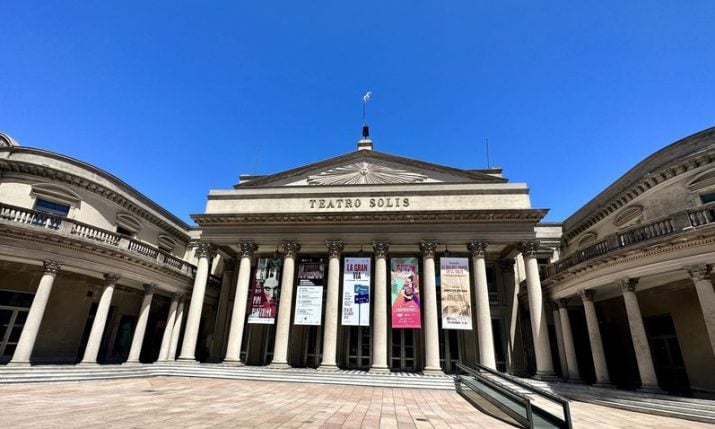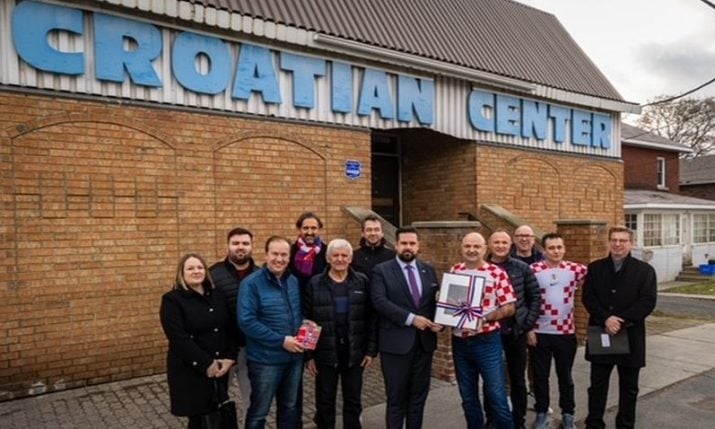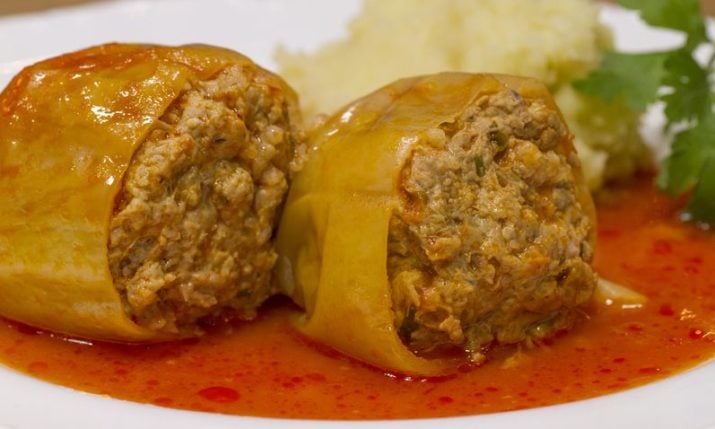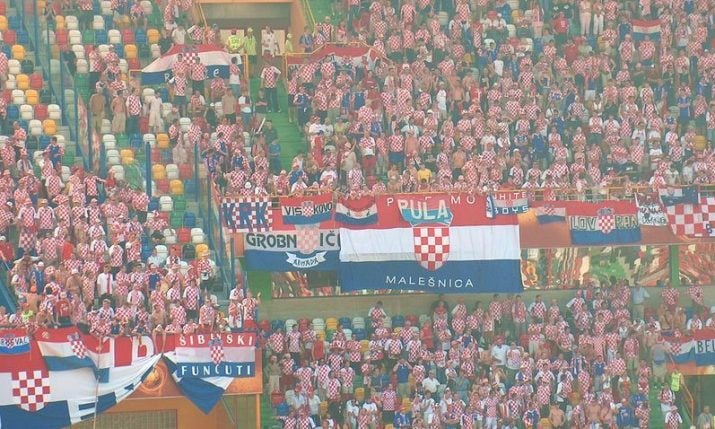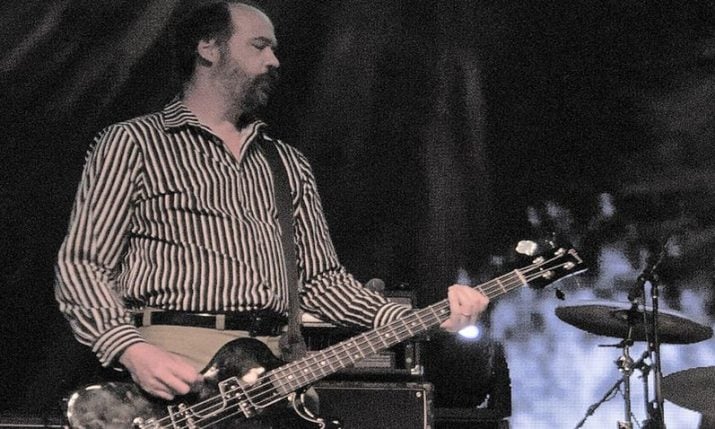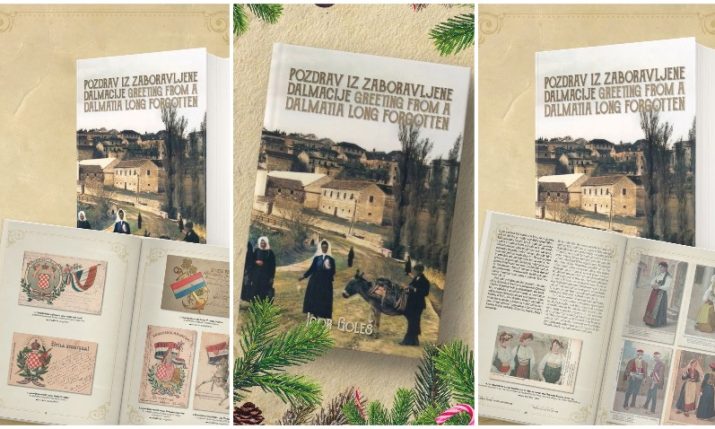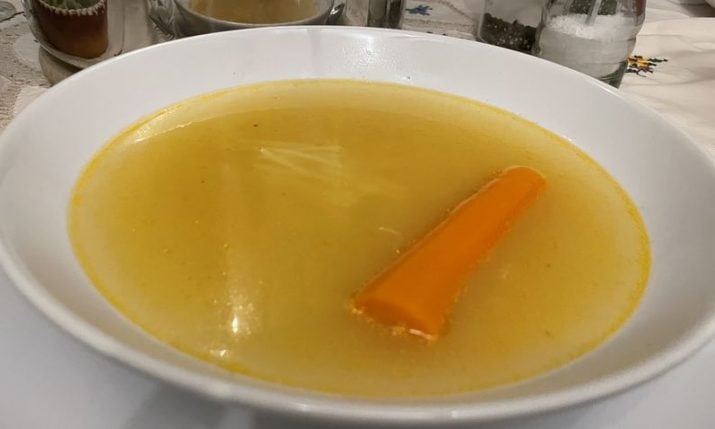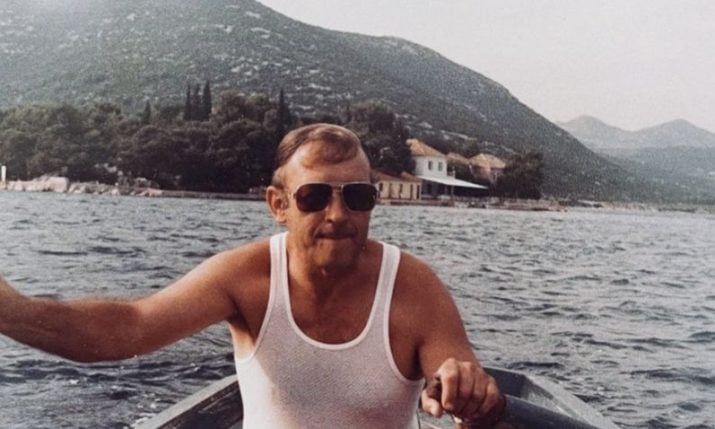Croatian kuna says goodbye
- by croatiaweek
- in Entertainment
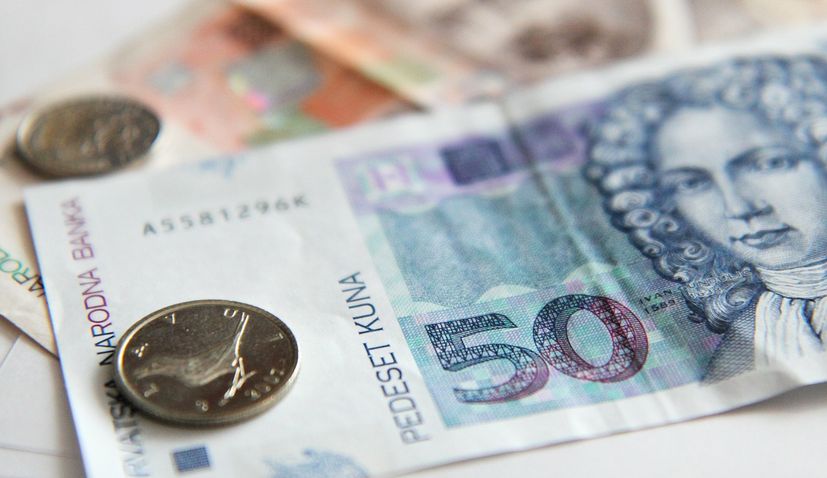
Croatian kuna on its way out tonight
This article was one of our best read stories of 2022
Croatia is farewelling the kuna as is adopts the euro currency from tomorrow, 1 January 2023. Although Croatia will join the eurozone tomorrow, all shops, restaurants, hotels in the country must still honour settlements in both kuna and euro until 14 January 2023.
With the kuna departing into history, which in today’s form went into circulation in May of 1994, many will be sad to see it go, including Australian-based numismatist Dusty Dragičević.
“A national currency is a powerful and symbolic projection of national identity and this will now be consigned to history. I hope that the people in power in Croatia have thought about this move to adopt the euro thoroughly, to make sure that this is the right decision for Croatia. I quite like the look of the kuna banknotes and I personally find the design of the Euros to be quite bland. Very boring in fact,” he told us.
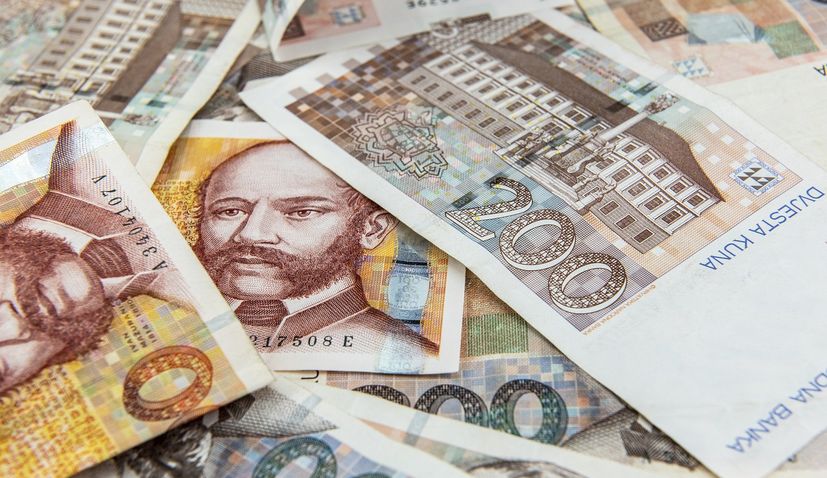
Croatian kuna today
Dragičević wrote a book this year about the history of Croatian banknotes which provides a fascinating look at Croatia’s rich numismatic history, but also gives an interesting insight into Croatia’s rich ancient history and remarkable achievements.
Croatian Banknotes: A Standard Reference is fully illustrated and covers all Croatian banknote issues from WW2 to the present day, including all fantasy issues, proposals and a section on the currency that Croatia almost had until the last minute, when they changed their minds.
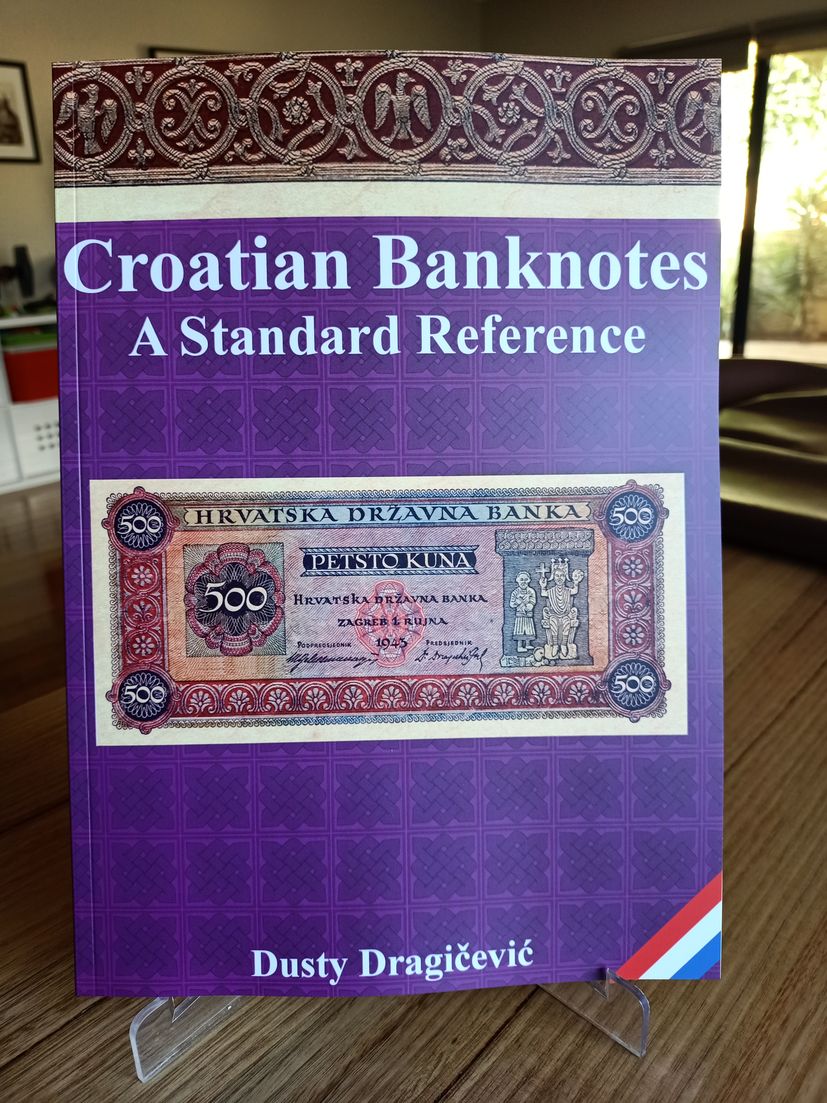
Croatian Banknotes: A Standard Reference (Photo: Private album)
A numismatist with a keen interest in Croatian history, Dragičević was born in Derby, a small town in the Kimberley Region of northern Western Australia, who grew up on Koolan Island in Australia’s north west where his father was employed as a machinist on an iron ore mine.
Currently living in Perth, both of Dragičević’s parents hailed from the Dalmatian coast.
“My mother was born and raised in Split and my father is from a village called Donji Humac on the island of Brac. I was “made” in Croatia but born in Australia. I obtained Croatian citizenship in 2008,” Dragičević tells us.
The idea to write this book first came to Dragičević when he visited Croatia in 2001.
“Looking at the kuna banknotes, I saw the images of famous people and wanted to know more about them and what contribution they have made to Croatia throughout history. Given that their faces are on banknotes, these people must have been great Croatians,” he says, before adding.
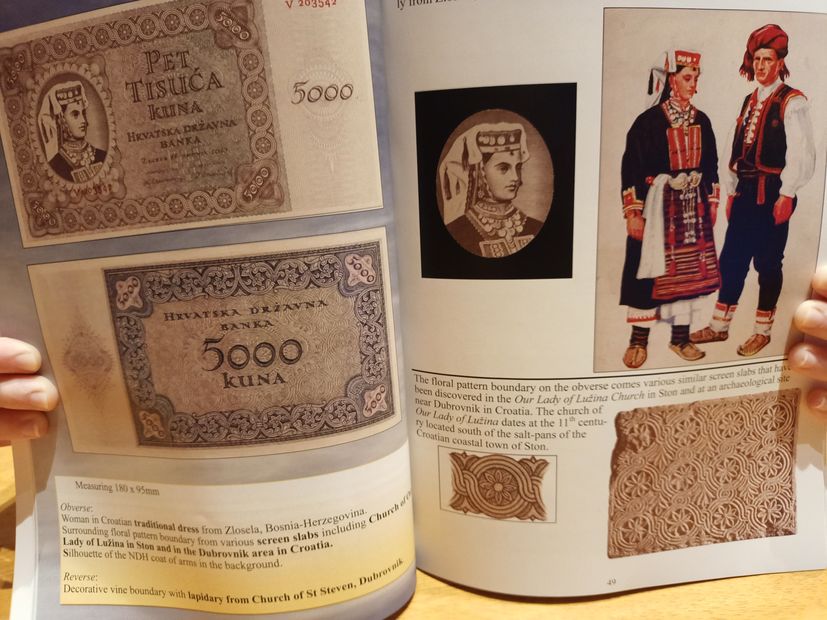
Croatian Banknotes: A Standard Reference (Photo: Private album)
“If you want to learn about the history of any nation just take a look at their national currency and look up the figures and landmarks that appear on them. I think that it is a fascinating history lesson in researching a nation’s currency.”
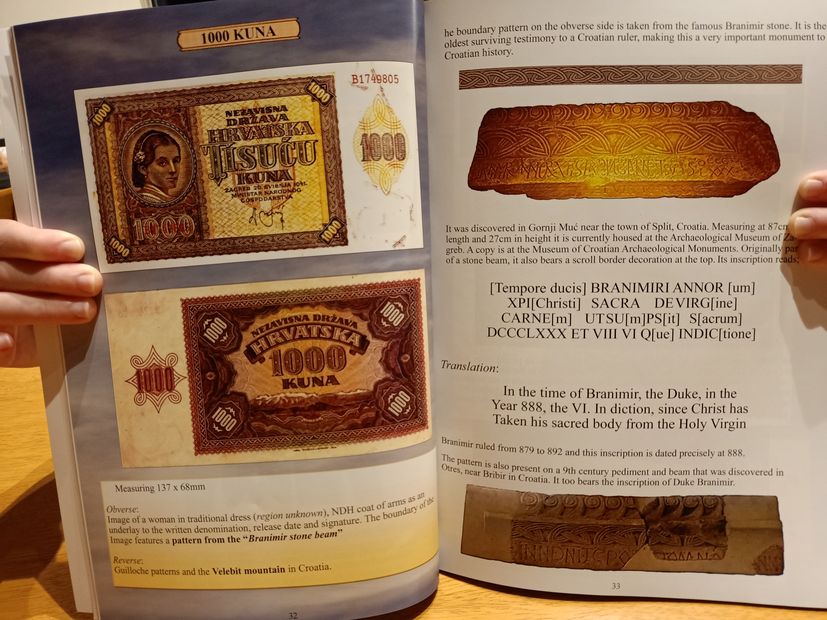
Croatian Banknotes: A Standard Reference (Photo: Private album)
The inspiration gathered momentum when he started to collect Croatian banknotes.
“My collection began when I met a collector who was selling old Croatian banknotes. I picked up a few old notes from the Independent State of Croatia. The banknotes featured interesting patterns and designs and I thought that this would now be my hobby. I was hooked. Over the years, I amassed a decent collection, eventually obtaining every single issue that existed,” he says.
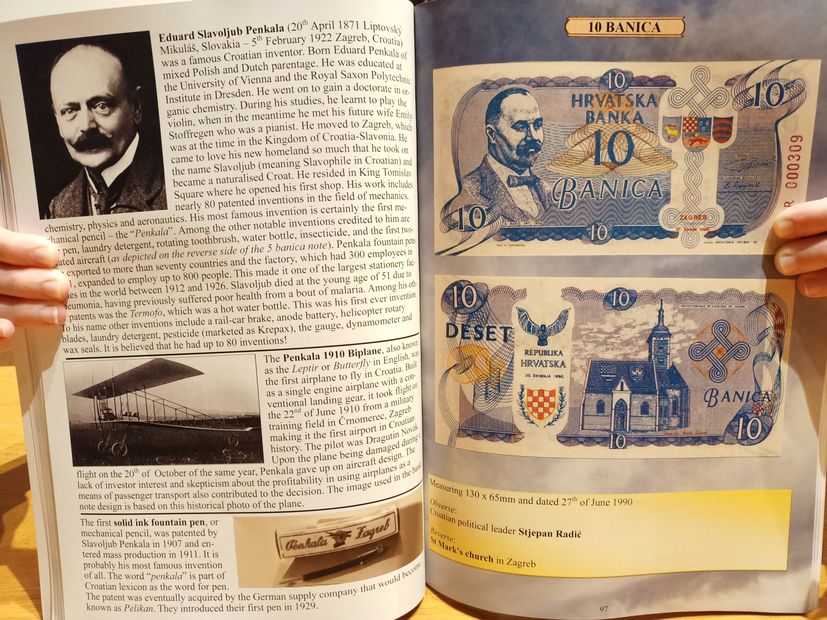
Croatian Banknotes: A Standard Reference (Photo: Private album)
From this, he delved deeper into the details of each banknote, discovering interesting things about the people that were featured on the banknotes, the designs of cultural monuments and their origins plus he says he learned a lot about early Croatian history from around the Pre-Romanesque era.
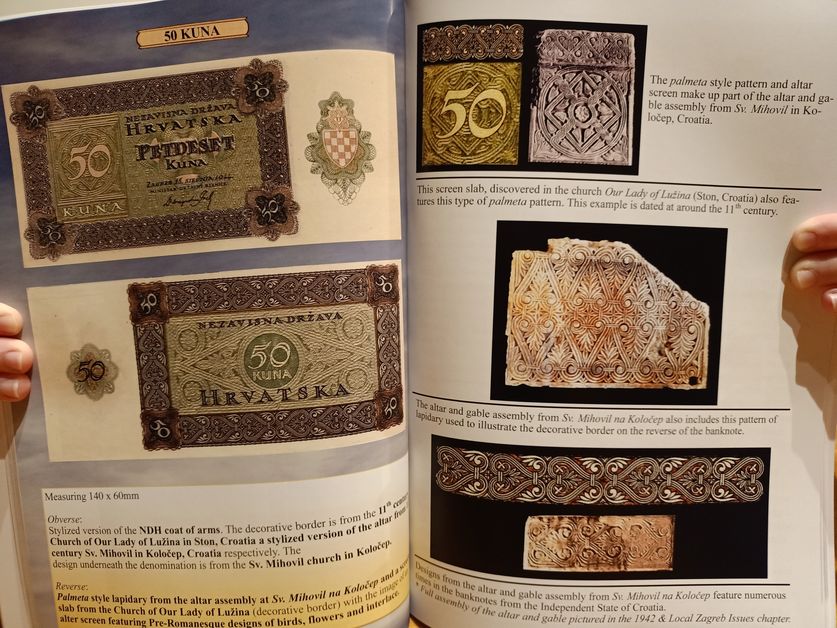
Croatian Banknotes: A Standard Reference (Photo: Private album)
Writing the book began slowly, but as he gained more information things came to him.
“It took seven years to write the book and I would describe it as a labour of love. I was writing about my hobby and learning so much about Croatia while doing it.. I thought that every Croatian should know their historical figures and cultural landmarks and they can also learn about their national currency too.”
The information that helped with his research was sourced from numerous books and publications. Information on historic patterns and monuments came from a visit to the Museum of Croatian Archeological Monuments in Split, whilst he also got information from various publications from the Croatian National Bank, from fellow numismatists, friends in Zagreb and Rijeka and from biographies and books.
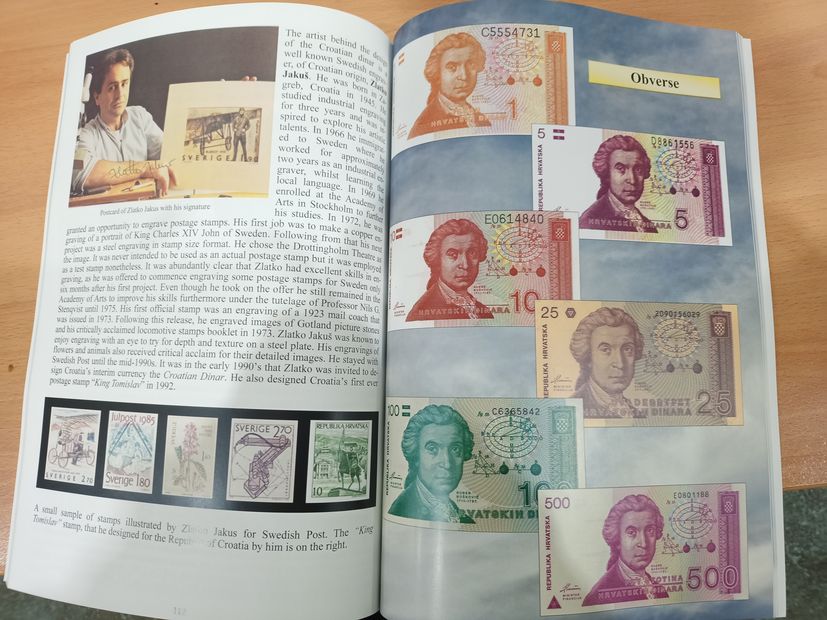
Croatian Banknotes: A Standard Reference (Photo: Private album)
“I own all of the banknotes that are featured in the book. I purchased them over the years from reliable dealers and collectors in Croatia. The most expensive purchase was the very rare 1943 500 kuna from the Independent State of Croatia which cost me a very pretty penny! My wife was not impressed. Most were purchased from reputable dealers who spent a lot of time helping me track down elusive specimens,” Dragičević says.
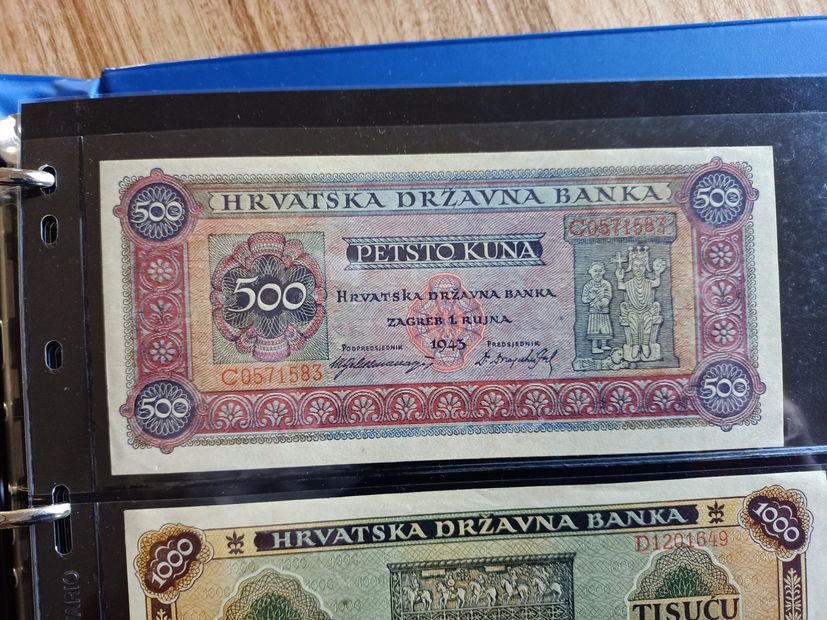
The very rare 500 kuna from 1943 (Photo: Private album)
The book is divided into sections;
Introduction: An explanation of the name of the national currency and its origins.
Croatian representation in the Kingdom of Yugoslavia
Independent State of Croatia issues of 1941 – 1944.
Fantasy and Diaspora issues during the former Yugoslavia up to 1990
The Croatian Dinar
The Hrvatskih Kruna (the currency Croatia nearly had)
Finally… the present day issues
Readers can find an illustration of every banknote, accompanied with a breakdown of each one explaining each illustration and their origins. They will discover who the artist was that designed them, the biographies of the people behind the signatures of each banknote and an interesting insight to the origins of many of the famous people that have contributed to Croatian history.
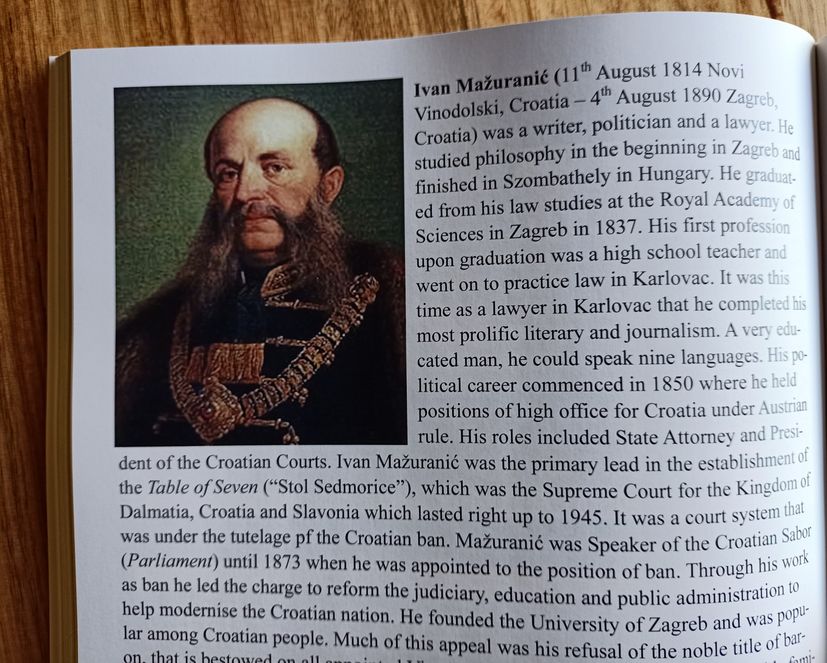
Information on historical figures (Photo: Private album)
“For me, the most interesting thing is that Croatia has kept itself true to history by adopting the name kuna. It is unique and continues the historic tradition (in paper money form) of using a marten as currency. Also, I love that each Croatian banknote that has ever been produced, feature designs have always illustrated the rich cultural heritage of Croatia and the people who have shaped our history,” he adds.
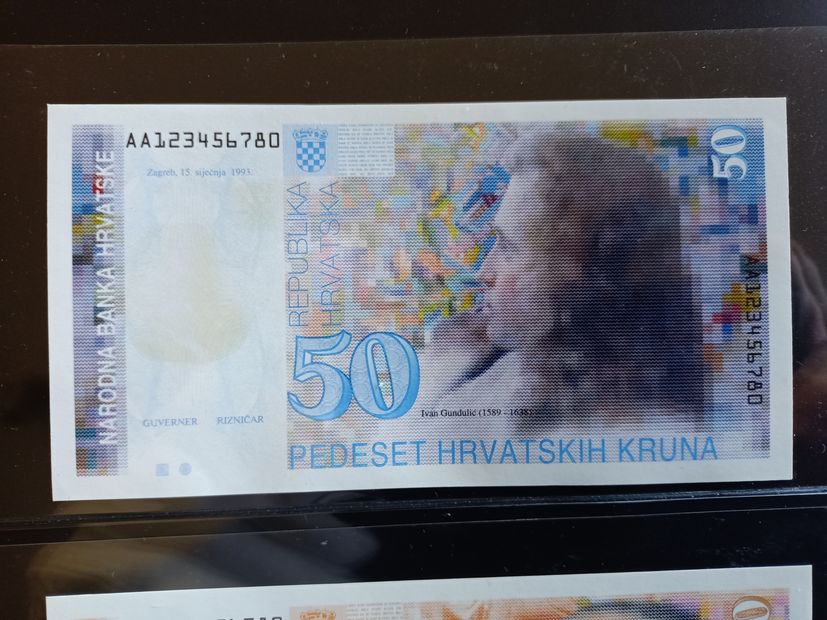
The currency Croatia almost had (Photo: Private album)
Apart from the very rare 500 kuna from 1943, Dragičević says his favourite banknote would have to be the 5000 kuna from 1943 (second issue).
“The design is brilliant. The colours, and in particular the illustration of the Viseslav baptismal font and the ancient Croatian lapidary artwork on the obverse side make it a magnificent piece of art.
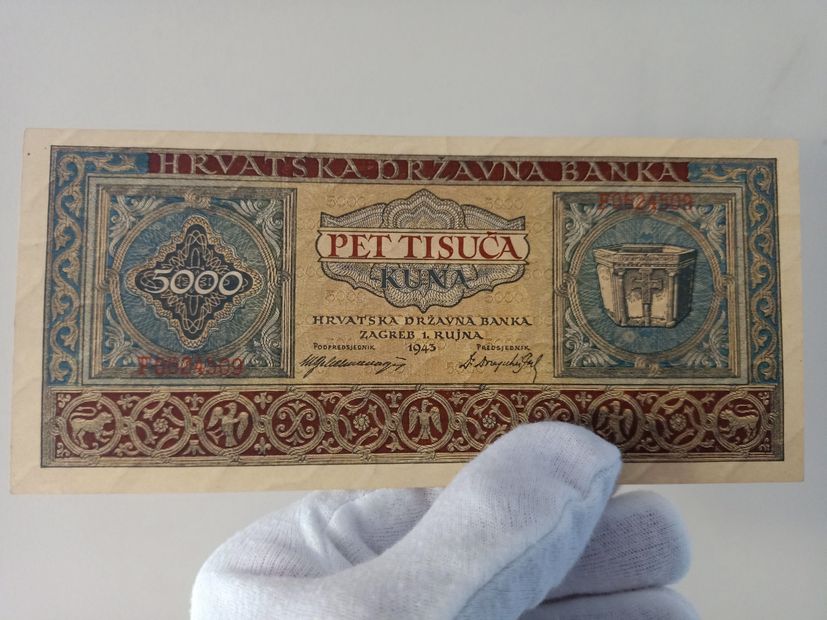
Dragičević’s favourite banknote (Photo: Private album)
The book is available as a hardcopy or as a pdf file. The book weighs just under 2 pounds.
Details how to get a copy are on the website here.

